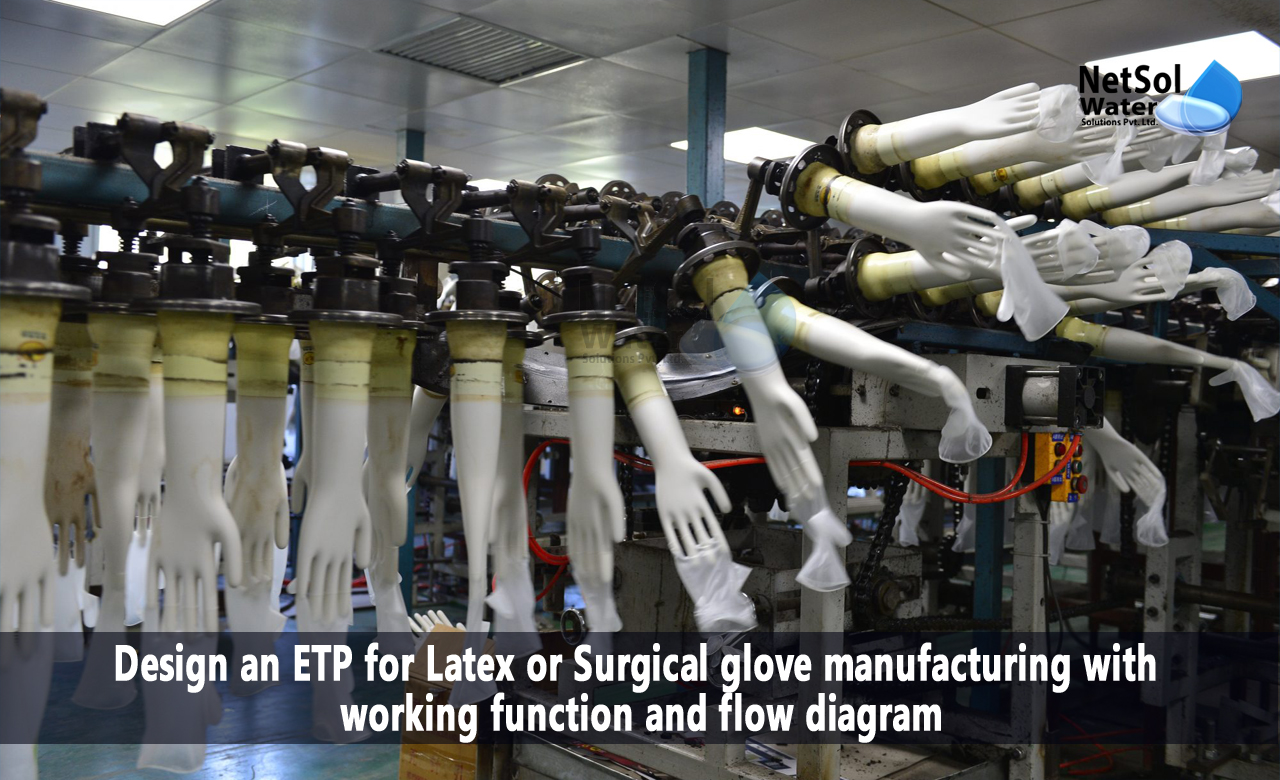Design an ETP for Latex or Surgical glove manufacturing
Latex gloves are frequently used in hospitals, labs, food manufacturers, and several other establishments. To stop the spread of infection, these gloves are made for one-time usage only. Surgical gloves, also referred to as medical gloves, surgical hand gloves, and operation gloves, are frequently made with lead-based fillers and natural rubber latex. The former can result in potentially fatal allergic reactions, while the latter are infamous for their toxicity.
Working of ETP:
Bar-screening: The initial component of the treatment system is bar screening. Additionally, it separates and easily removes bulky matter carried by raw water and that could jeopardise the effectiveness of water and sludge treatment, or at least complicate treatment implementation and operation. This protects downstream structures from the arrival of large objects that could cause blockages in connecting pipelines, and even in the various units making up the plant.
Screening: To avoid harming pumps and other equipment downstream (or affecting water flow), fine grit that enters the influent must be removed. This grit needs to be taken out of the grit chamber since it is too small to be screened out. The heavier grit can sink to the chamber's bottom thanks to different types of grit chambers (horizontal, aerated, or vortex), while the water and organic material move on to the next step in the process. Physically removing and discarding the grit from the chamber's bottom.
Primary clarifier: Prior to biological treatment, solids are removed through physical treatment, which is the first clarity. After preliminary screening, it is the most economical approach to eliminate these materials. Process water is injected into the clarifier tank, where floatable solids (scum) are skimmed off the surface and settleable solids (sludge) are raked up from the bottom and removed using a sludge removal system. Over a weir, wastewater that will undergo biological treatment exits the clarifier. A primary clarifier should remove between 90% and 95% of the settleable solids, 40% to 60% of the suspended solids, and 25% to 50% of the total BOD5.
Aeration: In order to remove dissolved gases and oxidise dissolved metals, such as iron, hydrogen sulfide, and volatile organic compounds, aeration puts water and air into close contact.
Secondary clarifier: As the influent leaves the aeration process, it enters a secondary clarifier, where any very minute solids (or fines), like in the primary clarifier, drop to the bottom of the tank. These tiny particles, also known as activated sludge, are primarily made up of living bacteria. To boost the bacterial concentration, aid in their growth, and quicken the breakdown of organic material, some of this activated sludge is reintroduced to the aeration tank. The surplus gets thrown away. The organic content in the water coming out of the secondary clarifier has been greatly reduced, and it should be getting close to the projected effluent standards.
Chlorination: It is necessary to analyse the departing effluent for the presence or absence of bacteria and to disinfect the water because the aeration stage increases the concentration of bacteria. This makes sure that bacteria in quantities greater than those allowed won't be released into the environment. The most prevalent and affordable kind of disinfection is chlorination, but ozone and UV disinfection are also gaining favour. Before chorine is released into the environment, it is crucial to test the free-chlorine levels to make sure they are within permissible ranges.

Do you need an advice or assistance on selecting the best water and waste water treatment unit? We have solutions for all your problems!
Let us now your problem, our experts will make sure that it goes away.
For an assistance or related query,
Call on +91-965-060-8473
Or write us at enquiry@netsolwater.com



